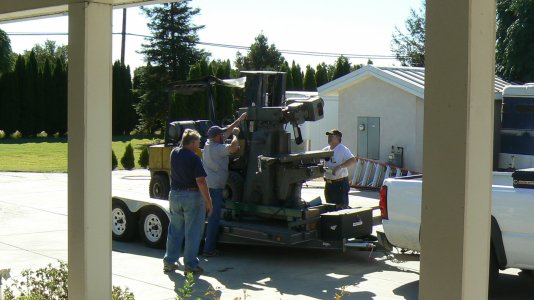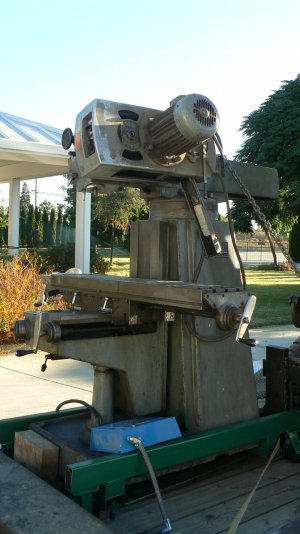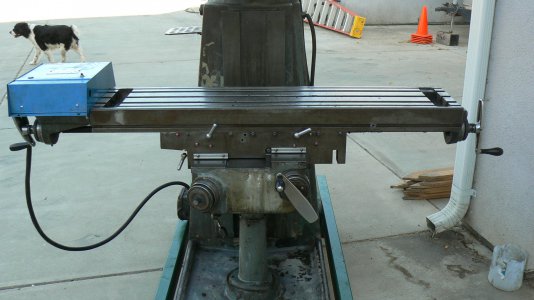This weekend I took delivery of my first milling machine. Rather old and dirty, not is to bad of shape, paint worn off and a few broken parts like all old equipment. Now comes the task of cleaning it up, checking it out and figuring out how to make the missing parts. This forum has posted many beautiful pictures of past restorations of some pretty dilapidated equipment in the past which has been brought back to better than show room condition. My goal with this machine is to get it functioning and maybe a new coat of paint so it looks respectable. But before paint can be applied it must be cleaned, I do not plan on completely disassembling the machine because of the shear size of its bulk and weight. I do want to clean all movable surfaces of old grease and grime, check all oil passages for clogs, change all of the fluids, get it wired and then check it for its' accuracy before entering into any serious dis-assembly if necessary.
My question is "What is the best way to clean the machine?". I thought of using the power washer while I have the machine outside to remove old grease and oil and any loose paint. Then a good friend reminded me of "Rust" and how polished machine surfaces will rust when water is applied especially in areas where it is difficult to dry. So before proceeding on that tact I thought a post here would be to my benefit. I probably should mention that the machine now is free of rust, it has been inside and kind of taken care of and has not been abused. Next , how to polish and clean the bright surfaces and the calibrated dials. Years of exposure to way oil have dulled all of the dials to the point they are almost unreadable. The table has some signs of mill ends strikes and a few small indentations where drill bits have touched down, and a few nicks from things being dropped but not to bad. What is the best way to clean this table up?
Any advice from you who have been down this road before with an old Bridgeport or clone is greatly appreciated.
My question is "What is the best way to clean the machine?". I thought of using the power washer while I have the machine outside to remove old grease and oil and any loose paint. Then a good friend reminded me of "Rust" and how polished machine surfaces will rust when water is applied especially in areas where it is difficult to dry. So before proceeding on that tact I thought a post here would be to my benefit. I probably should mention that the machine now is free of rust, it has been inside and kind of taken care of and has not been abused. Next , how to polish and clean the bright surfaces and the calibrated dials. Years of exposure to way oil have dulled all of the dials to the point they are almost unreadable. The table has some signs of mill ends strikes and a few small indentations where drill bits have touched down, and a few nicks from things being dropped but not to bad. What is the best way to clean this table up?
Any advice from you who have been down this road before with an old Bridgeport or clone is greatly appreciated.



